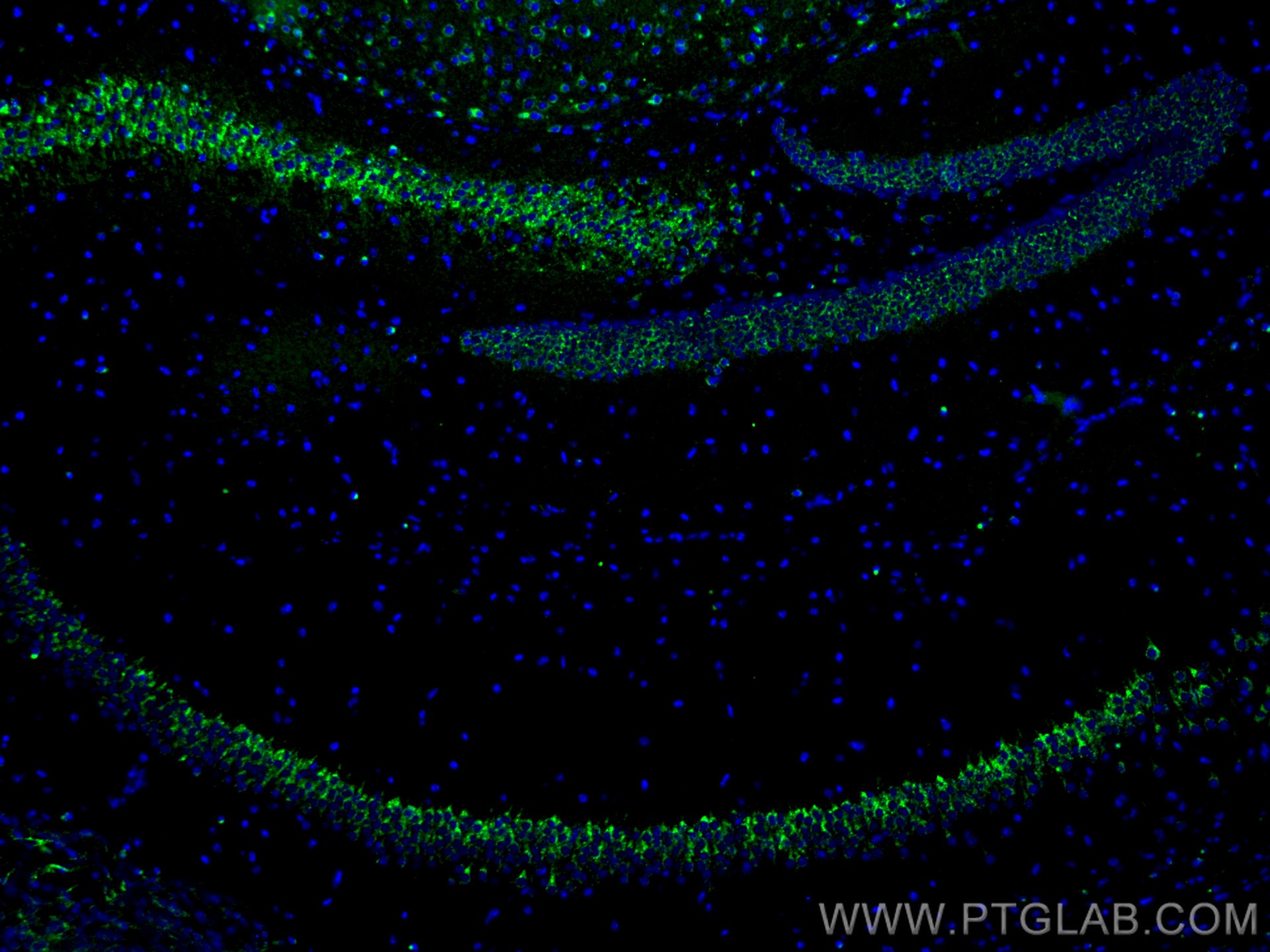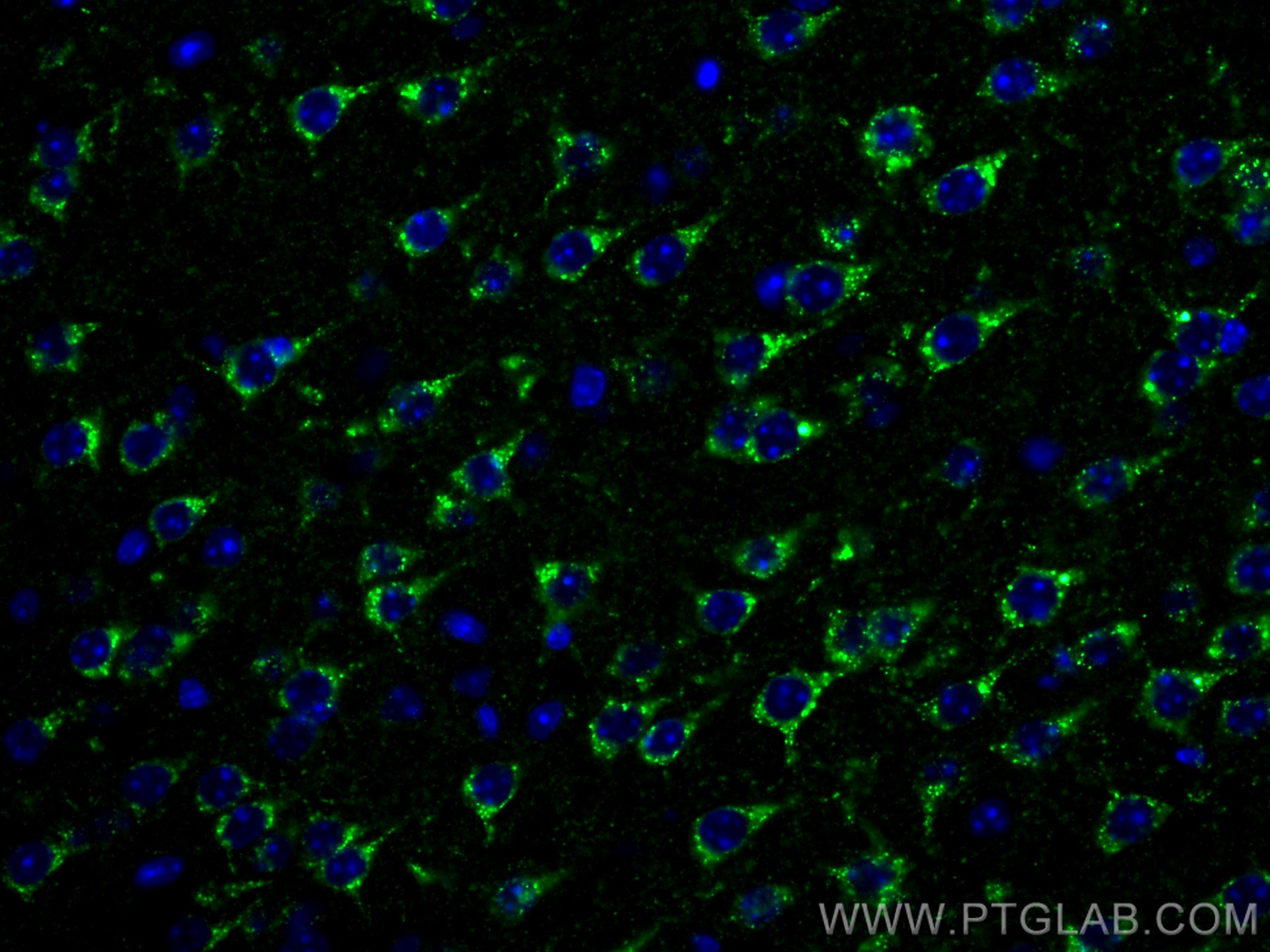Tested Applications
| Positive IF-P detected in | mouse brain tissue |
Recommended dilution
| Application | Dilution |
|---|---|
| Immunofluorescence (IF)-P | IF-P : 1:50-1:500 |
| It is recommended that this reagent should be titrated in each testing system to obtain optimal results. | |
| Sample-dependent, Check data in validation data gallery. | |
Product Information
CL488-12369 targets Sortilin in IF-P applications and shows reactivity with human, mouse, rat samples.
| Tested Reactivity | human, mouse, rat |
| Host / Isotype | Rabbit / IgG |
| Class | Polyclonal |
| Type | Antibody |
| Immunogen |
CatNo: Ag2997 Product name: Recombinant human SORT1 protein Source: e coli.-derived, PGEX-4T Tag: GST Domain: 481-831 aa of BC023542 Sequence: EPNAVGIVIAHGSVGDAISVMVPDVYISDDGGYSWTKMLEGPHYYTILDSGGIIVAIEHSSRPINVIKFSTDEGQCWQTYTFTRDPIYFTGLASEPGARSMNISIWGFTESFLTSQWVSYTIDFKDILERNCEEKDYTIWLAHSTDPEDYEDGCILGYKEQFLRLRKSSVCQNGRDYVVTKQPSICLCSLEDFLCDFGYYRPENDSKCVEQPELKGHDLEFCLYGREEHLTTNGYRKIPGDKCQGGVNPVREVKDLKKKCTSNFLSPEKQNSKSNSVPIILAIVGLMLVTVVAGVLIVKKYVCGGRFLVHRYSVLQQHAEANGVDGVDALDTASHTNKSGYHDDSDEDLLE Predict reactive species |
| Full Name | sortilin 1 |
| Calculated Molecular Weight | 831 aa, 92 kDa |
| Observed Molecular Weight | 100-110 kDa |
| GenBank Accession Number | BC023542 |
| Gene Symbol | Sortilin |
| Gene ID (NCBI) | 6272 |
| ENSEMBL Gene ID | ENSG00000134243 |
| RRID | AB_2934404 |
| Conjugate | CoraLite® Plus 488 Fluorescent Dye |
| Excitation/Emission Maxima Wavelengths | 493 nm / 522 nm |
| Form | Liquid |
| Purification Method | Antigen affinity purification |
| UNIPROT ID | Q99523 |
| Storage Buffer | PBS with 50% glycerol, 0.05% Proclin300, 0.5% BSA, pH 7.3. |
| Storage Conditions | Store at -20°C. Avoid exposure to light. Stable for one year after shipment. Aliquoting is unnecessary for -20oC storage. |
Background Information
Sortilin 1 (SORT1), is a trans-Golgi network (TGN) transmembrane protein and is a member of the Vps10p domain receptor family. SORT1 binds a number of unrelated ligands that participate in a wide range of cellular processes. It functions as a sorting receptor in the Golgi compartment and as a clearance receptor on the cell surface.
Protocols
| Product Specific Protocols | |
|---|---|
| IF protocol for CL Plus 488 Sortilin antibody CL488-12369 | Download protocol |
| Standard Protocols | |
|---|---|
| Click here to view our Standard Protocols |






